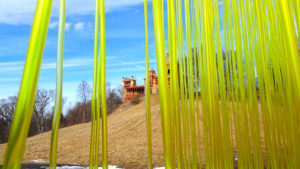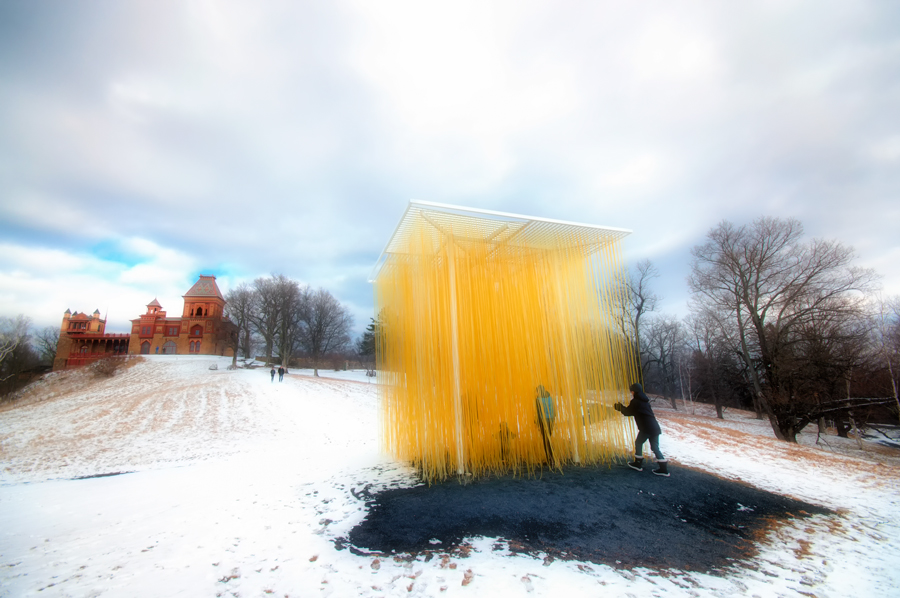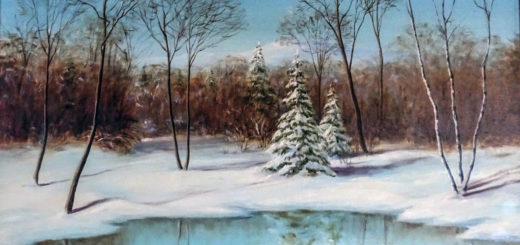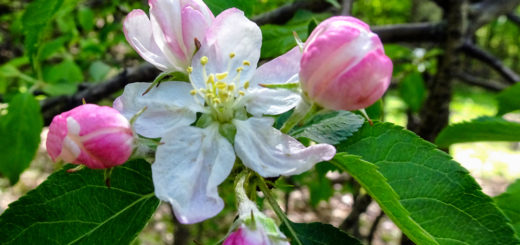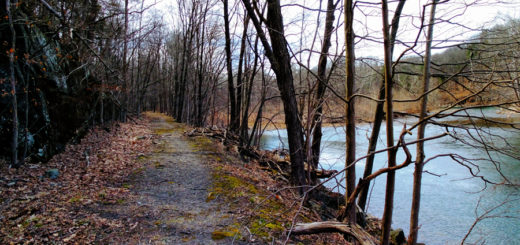Penetrable Olana
Hoping to investigate matters pertaining to landscape and art, I drive down from the Mountaintop, cross the Hudson via the Rip Van Winkle Bridge, and arrive at Frederic Church’s place, Olana, which sits above the river on a long hill. I come here for the same reasons most visitors do: spectacular views, and a tour of the ornate villa that the artist designed for himself in the latter part of the nineteenth century. These environs as we know them today might have been rendered otherwise. Had the New York State Legislature not passed a bill in 1966 authorizing the purchase of the property for an historic site, visitors to this location would not be enjoying a lovely stretch of open space but instead wandering aimlessly past ticky-tacky little suburban boxes on a loveless hillside, wondering where did all the glory go. But no, the glory abides! Here at Olana you can drive up through the grounds of the restored estate of one of America’s great landscape artists—and marvel at nature’s beauty. Here at Olana you step out of your car and into cozy sublimity of a Hudson River School painting. Here at Olana you might still discover the remnants of a pristine America!
But wait! Something on this landscape has changed. You can see it from the piazza of the famed stone, brick, and polychrome-stenciled mansion, down there on the lawn sloping to the south. From this distance it looks like a small structure or outbuilding—perhaps a woodshed—yet it is golden in color and seems to shimmer and sway with each gust of the February wind. Visitors on this day have beaten a path to it through the mud and melting snow. Just now, a few human figures can be seen approaching the edifice. As they draw near, they enter the structure—though not through any door. Rather, they dissolve, or simply vanish, into an auriferous glow. Time passes. The figures eventually reappear, emerging from the opposite side. What is going on here?
I take a slippery walk down the beaten path. The structure comes into focus. It’s not a woodshed—though about the same size. Found here are hundreds of long, yellow plastic tubes dangling down from a flat roof, giving the effect of a dense golden cloud suspended in a containment vessel of metal framework. Helpful curatorial signage informs the visitor that this is an installation titled Penetrable by famed Venezuelan artist Jesús Rafael Soto (1923-2005). “The artist created this sculpture for you to walk through. Please explore the interior of Penetrable, but keep in mind that it is a work of art and was not built to hold or support your weight.” The mind, I have heard some say, is heavier than the sky.
I fear physically immersing myself into a work of art, so I sit on a nearby bench and watch other visitors take the plunge. First to arrive on the scene, a happy young couple holding hands. They step up to the threshold of the sculpture, part the outer curtain of tubing, and step into the shimmering luminosity. Their figures immediately shed any distinctive identifiable features and they become mere shadowy forms, vaguely human and quickly dissipating in the heart of this golden shroud. Just when I think they are gone for good, their whispery forms rematerialize near the opposite interior edge of the sculpture. They step out, still holding hands, looking happily the same as when they entered. Next up, three generations of a family—a man, two women—one younger, one older—and a toddler. As they draw near, the child steps forward first, squeals with the delight of discovery as his little body totters into the attractive oblivion of the kinetic artwork. Then he’s gone—first to shadow, then to pure golden light. He is followed by the rest of the family. All gone. In due course, they traverse together the veiled interior of the penetrable world, until at last they regain the welcome ground of Olana.
So it goes. Now it’s my turn to pass through the golden, unsettling lambency. See you on the other side.
©John P. O’Grady
(This piece originally appeared in the February 16, 2018 edition of The Mountain Eagle.)

